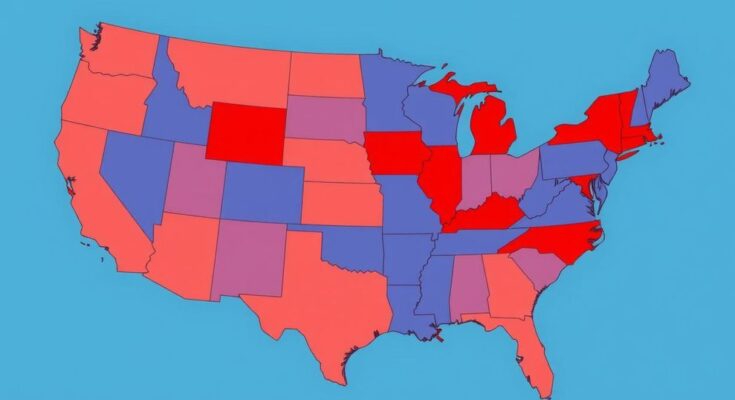- Democrats won a key judicial election in Wisconsin, raising concerns for Republicans.
- Elon Musk’s significant financial backing did not secure a victory for Republicans in Wisconsin.
- Political mobilization among Democrats suggests energy is shifting ahead of the midterms.
- Voter turnout lowered in off-year elections, requiring strategies to engage bases.
- Voter ID measures continue to show bipartisan support despite Democratic wins.
Can Wisconsin Results Predict Future Election Outcomes?
Political Winds May Be Shifting for Republicans The recent election results from Tuesday have raised eyebrows among Republican strategists. In particular, a notable judicial election in Wisconsin captured national attention, both for the hefty $70 million ad spend and the implications of the outcome. Democratic candidate Susan Crawford emerged triumphant, winning by a considerable margin of 10 points. This victory is significant considering Wisconsin’s narrow decision in the 2024 presidential election. While Republicans celebrated victories in Florida’s special elections by 14 points, these wins were within heavily Republican districts, raising concerns about the broader implications for the upcoming midterms.
Is Musk’s Political Star on the Decline?
Musk’s Influence Under Scrutiny After Election Losses Elon Musk’s involvement in the Wisconsin race has been viewed as a high-stakes gamble. He reportedly poured around $20 million into supporting Crawford’s opponent, only to see his efforts fizzle out in defeat. This raises questions about whether Musk’s influence can continue to bolster Trump’s political ambitions, as his approval ratings have taken a downturn recently. Furthermore, with a crowd of critics closing in around Musk, it is unclear whether he can maintain his position in Trump’s circle or if the electoral outcomes will further taint Trump’s political persona, especially as he addresses his campaign’s overarching issues.
How Democrats Are Responding to GOP Strategies
Democrats Unite Against Perception of Complacency Within the Democratic Party, there’s a palpable sense of urgency for action against what they see as a complacent approach. The intensity of turnout and activism among Democrats has become central to their tactical response against Republican narratives, particularly Trump’s. Figures such as Senator Cory Booker have taken bold stances, with long speeches aimed at raising awareness for their causes. Moreover, state Democratic leaders emphasize that the core issue is not a battle between progressive and moderate factions, but rather a unified push for action to mobilize voters ahead of the midterms.
Trends in Voter Participation and Spending Strategies
Key Issues Impacting Off-Year Election Dynamics The funding dynamics in both Wisconsin and Florida are notable, as candidates faced massive financial inputs from both sides. For instance, while Democratic candidates mobilized millions in campaign funds, Republican challengers appeared less competitive in terms of fundraising. Voter turnout was markedly lower in both states compared to presidential elections, but some new trends are emerging that could have implications for future political battles. The shifting attitudes towards voter ID measures continue to lean conservatively, reflecting ongoing clashes over voting rights that could define campaign strategies moving forward.
The Ongoing Debate on Voter ID Legislation
The Voter ID Controversy – A Bipartisan Concern Interestingly enough, despite the Democratic victory in appointing a liberal judge, voters in Wisconsin overwhelmingly supported a Voter ID amendment that solidifies existing regulations in the state constitution. The notion of requiring government-issued identification appears to maintain bipartisan favor, creating a paradox where even liberal voters backed this measure. Given that polls indicate strong support for photo IDs, the implications for Democrats are twofold: while they see some victories, they must also navigate persistent issues that resonate more with conservative voters. Overall, the Democrats should reflect on both their successes and persistent challenges as they gear up for an election cycle defined by shifting political alliances.
In summary, the recent election results suggest a complex landscape for the Republican Party as they prepare for the 2026 midterms. The victory of Democrats in key races, especially in Wisconsin, signals potential headwinds for Trump and his allies. Additionally, the mixed results highlight the nuanced challenges Democrats face, particularly around voter ID measures that continue to garner bipartisan support. As the political dynamic evolves, both parties will need to adapt their strategies for the road ahead.




